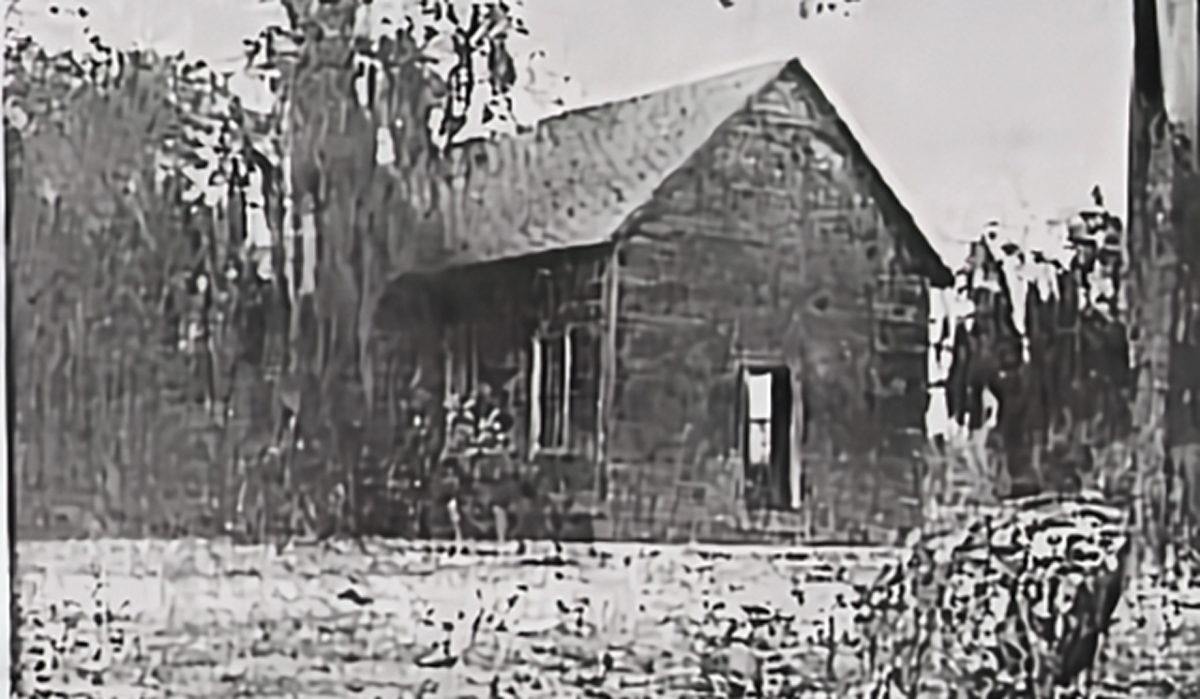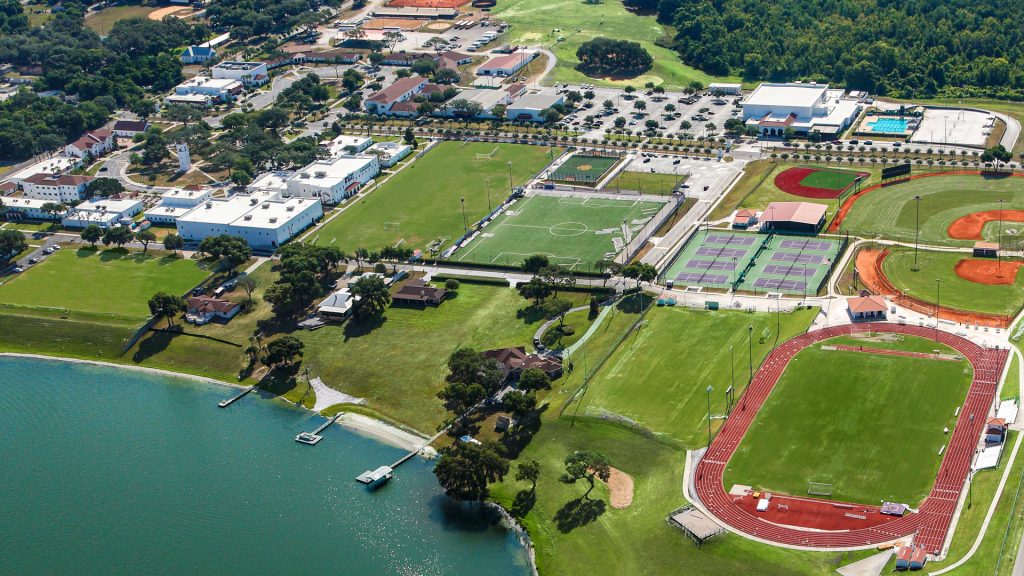Our Mission
Montverde Academy is a college preparatory school that inspires students to become leaders with a passion for knowledge, global vision, and innovation while developing character in a nurturing and diverse community.
Heads of School
Jon Hopman, 2022-Present
Dr. Kasey C. Kesselring, 1999-2022
Walter L. Stephens, Jr., 1968-99
Henry D. Roberts, 1955-68
L. Neal Smith, 1952-55
Grover M. Ford, 1951-52
L. Neal Smith, 1950-51
D.P. Hawkins, 1949-50
Karl Lehmann, 1947-49
H.P. Carpenter, 1945-47
L. Neal Smith, 1944-45
H.P. Carpenter, 1912-44
Our History
Founded in 1912, Montverde Academy’s journey from a two-room schoolhouse to the globally recognized college preparatory school of today has been extraordinary. The Academy has been privileged to have prepared students from across the United States and around the world for their journey to higher education and beyond.
1900-20s
Montverde Academy (MVA) originated from a two-room schoolhouse in 1912 with the name Montverde Industrial School (MIS). The MIS was created from the foresight of Kentucky resident Dr. Henry P. Carpenter who wanted to establish a Christian-based industrial school that gave people from poorer circumstances an opportunity to nurture both their physical and mental capacities and where both boys and girls could develop their “head and heart… sound bodies and good minds.”
MIS Alma Mater (1912-1930)
Oh, Montverde, our guide and friend Dear School, we sing your praise
That you and we may once again bring work, success
And play to all our days.
Take thou our minds, our hands, our hearts; Fill them for your purpose high,
That in our lives you may impart
Strength and growth anew for each day passing.
Oh, Montverde, our guide and friend,
We sing your Love and praise.
For home so dear you e’er
Have been All hail, Montverde, all hail,
Our guide and friend.
1930-50s
Students learned to cultivate nearby lands as a means of food and economic survival. Through the early 1920s, the school cannery, located on campus, helped sustain its food levels and the curriculum emphasized educational techniques connected to farming and agribusiness. Students studied science, math, literature, and world history in accordance with their work in nearby farming fields where a passing grade of 70 percent was required. Students who attained a 90 percent average throughout the year were exempt from their final exams.
Extra-curricular activities included Greek Athenian and Philomathean societies where students competed against each other in both athletics and humanities for the reward of hanging their society “pennant” (banner) on school grounds as a symbol of campus superiority.
In 1922, the “industrial” was dropped from the school’s name and it became known as the Montverde School (MVS). In 1923, the school sold its steam cannery operation to the town of Montverde. The cannery was the only commercial canning enterprise in the region and would continue to employ citizens of the town, area farmers, and students who worked at the cannery storing surplus crops and meats.
In 1925, the name “Interlachen” was assigned to the first yearbook. The Carrie F. Conrad chapel opened (in honor of the chapel’s benefactor). Ms. Conrad insisted the name “Karl Lehmann” be added to the chapel’s name in respect of Mr. Lehmann who conceptualized the original idea for a chapel on campus.
Athletics included track and field, basketball, football, and soccer teams. The football team began in 1926 under Head Coach GR Carpenter and was called the “Crackers.”
The school officially became a private preparatory school enrolling only boarding students, and no longer accepted students from the Lake County public school system. The Athletic Association (AA) was formed to offer guidance and support for the financial needs and emotional well-being of the Montverde School’s six athletic teams.
In 1935, the senior class dedicated a memorial tower to the Montverde School. The tower rested along the side of CR455 that led through campus. The seven-foot tower was made of stone and concrete with a square marker in the center displaying the school’s name.
By the end of the 1930s, Montverde School students were granted acceptance into any college in the South without having to take entrance examinations.
In 1944, school founder Dr. H.P. Carpenter became ill and at the start of the 1945 school year stepped down as president. Neal Smith, a 1922 graduate of the school, took over as Interim President. Smith served for only one year (1945-46). Dr. Carpenter returned to the school to serve one more year as president (1946-47) before retiring in 1947 after having served 33 years as the school’s president. Karl Lehmann took over as president of the Montverde School in 1947. Lehmann served for three years before retiring in 1950.
The Montverde School was developing into a predominant Florida academic institution. According to a 1947 local newspaper, Montverde Breeze, the school reportedly possessed the “largest and best trained faculty” in the region. By the late 1940s, students from 56 Florida towns, 12 American states, and three foreign countries (including British Guiana and Dominican Republic) attended the school.
The McKenzie Open Air Recitation building (now McKenzie Upper School building) was rebuilt to include an expansion to the atrium. New showers were installed at Arnold Hall, and a new heating unit was installed in Carpenter Hall.
From 1944-48, the school’s athletic teams did not participate in outside athletic competition and in forming two teams each, competed against each other. Outside competition resumed in 1948 under the direction of Coach Otis McQuaig.
A visit by then US Senator Claude Pepper in 1948 helped increase the MVS’ outside visibility as he publicly expressed his delight in the many accomplishments of the school. In the months after the senator’s visit, a group was formed known as “Old and New Friends of the Montverde School.” The alliance contributed $25,000, an extraordinary amount of money for that era, to establish future support from alumni and friends of the Montverde School.
In 1950, Dr. D.P. Hawkins was appointed as the school’s fourth president. That year, Montverde School formed a first-ever fire squad comprised of six students all from Upper School. The members actively served as a fire-prevention squad that worked in collaboration with the Montverde Fire Department equipped with a fire truck, one hose, a few ladders, and a water pump.
Further extra-curricular activities, clubs, and organizations were added that included the President’s Council (MSPC). Dr. Grover Ford took the reins as president in 1952 and in 1953, students in grades K-5 were admitted for the first time. During the mid-1950s, tuition was approximately $550 for an 18-week semester.
Structural plans were devised for the creation of the first male-only dorm on campus that, upon construction’s completion, would be named Carpenter Hall in honor of H.P. Carpenter – the first president and head of school of the Montverde Industrial School.
1960-80s
MVA President Henry D. Roberts oversaw the completion of many projects including a new library and expansion of faculty apartments completed by the end of 1962. There were 30 detailed “Robert’s” rules that students were expected to follow for the D.A.R. Hall, 34 “Robert’s” rules for Dining Hall, and 15 “Robert’s” rules for congregating at the Beehive (student center). The rules addressed everything from cash transactions, counter behavior, loitering, and waiting turns to purchase items.
Many diverse student clubs formed on campus that included a French, FFA (Future Farmers of America), choir, skating, bowling, square dance, and pep club. MVA sports-related activities were comprised of cheerleading and boys’ and girls’ JV and varsity basketball teams.
By 1965, attendance from outside the US included students from Venezuela, the Virgin Islands, West Indies, and American states as far away as New York, Ohio, Tennessee, Texas, Virginia, and Washington, D.C. Clubs included public speaking, band, dance, and an all-inclusive student council.
Montverde Academy belonged to the Florida High School Activities Association (FHSAA). Teams competed in track, swimming, and boys’ JV and varsity basketball teams.
The St. Valentines’ Dance/Sweetheart and Valentine Court, the Halloween Dance, and the Miss Montverde Academy pageant were very popular events on campus. Additional clubs added included Bible, Spanish, knitting, psychology, chess, nature, and international relations.
The Summer School Study and Play program was formed. The programs were taught by faculty for grades 1-12 to help struggling students get on the right academic track.
By 1968, Dr. Walter L. Stephens, Jr., a successful MVA girls’ softball coach and teacher was appointed new Head of School. Dr. Stephens shared the management of Montverde Academy with long-term President Henry Roberts and would solely assume these responsibilities as MVA Head of School in 1969.
Dr. Walter L. Stephens, Jr. would hold the designation of President starting in 1970. Under Dr. Stephen’s tenure, The MVA student center, new girls’ dorm, President’s home, and a new administration building were all scheduled and completed in the early 1970s.
The tennis courts were resurfaced and the first athletic complex along with a 440-yard running track and soccer/baseball fields were completed in 1976.
Halloween, Christmas, Thanksgiving, and homecoming activities were celebrated on campus with tremendous student and faculty involvement. “Parents Night” became very popular in the 1970s. Students, faculty, and parents were able to meet and discuss student academics and programming as they refined relationships that would decades later become the Montverde Academy Parents Association.
By 1976, the newest MVA club additions included a Girls Athletic Association, folk song, Rembrandt painting, contemporary drama, and an astronomy club.
By the decade’s end, the tuition, room, and boarding fees were $3,200 a year for boarding students and $1,450 for day students. Athletic teams included JV and varsity girls’ and boys’ basketball, volleyball, track, and tennis. The senior class of 1978 body graduated students from Aruba; Bahamas; El Salvador; Honduras; Iran; Saudi Arabia; Venezuela; Puerto Rico; and St. Croix, Virgin Islands.
In the early part of the decade, many students were offered the opportunity to travel to Europe and visit countries such as Italy, Austria, and Germany. This continued throughout the decade with perhaps the most memorable of these trips occurring in 1987 when Dr. and Mrs. Stephens, along with several students and chaperones, visited South Korea and Hong Kong, China.
Clubs included cooking, weightlifting, War Games, photography, backgammon, Bible, horseback riding, and senior volunteer club. International students from as far away as Brazil, Japan, Mexico, and Saudi Arabia were part of the student body. Athletics included boys’ and girls’ JV and varsity basketball and volleyball teams track & field, boys’ soccer, and cheer.
In 1989, Mrs. Sandra O. Stephens, wife of Dr. Stephens, was appointed Vice President Director of Admissions and Public Relations of MVA.
1990-2010s
Boys and Girls Varsity basketball, soccer, tennis, volleyball, and softball continued to thrive alongside prevalent student activities such as the Christmas, Halloween, and Valentine’s Day dances.
In 1997, the MVA Fitness Center opened. Co-joined to the Henry D. Roberts Gymnasium, the 2,400 square-foot facility consisted of treadmills, step machines, recumbent bicycles, and weights.
The Class of 1999 was comprised of students as far away as Barbados; the West Indies; Kinshasa; Zaire; Hong Kong, China; and Bottrop, Germany.
Dr. Kasey C. Kesselring, one of the youngest Heads of Schools in the US, was selected as MVA’s newest Head of School in 2000.
MVA student technology access and computer labs were expanded, new Academy transportation vans and buses were purchased, improvement of fine arts curricula and professional development for teachers and administrators were instituted, and the establishment of an MVA Pre-K3 through sixth-grade program, honors and AP courses, multilevel ESL programs, and SAT preparations classes were added. The foundation of new dorms, outdoor facilities, and sidewalks enhanced the aesthetics and landscapes of the campus.
Dr. Kesselring advanced accreditation and increased enrollment by hundreds in the combined Lower, Middle, and Upper School divisions. The Mission Statement “to increase student knowledge, and develop character through a nurturing, diverse community by inspiring achievement, preparing for the future, and leading from example,” was implemented, and a school logo and eagle mascot were promoted in publications and on school attire.
The focus on the arts throughout the 2000s culminated in the design, creation, and development of the $1.5 million Sandra O. Stephens Center for Media & Performing Arts equipped with new media labs and music rehearsal spaces and the formation Music and Theatre Conservatories in 2015.
The Academy became an accredited institution by the Southern Association of Colleges and Schools, the Florida Council of Independent Schools, the Southern Association of Independent Schools, and the Florida Kindergarten Council.
By 2007, MVA world travel programs included student visits to Italy and England. Admissions and executive staff also traveled together working to foster the school’s mission and prominence with annual trips to China, Japan, Thailand, South Korea, and Vietnam. During the decade, Montverde Academy gained national distinction for its invitational basketball tournament (MAIT) and nationally-ranked varsity basketball and soccer sports programs.
Over the decade of the 2000s, Dr. Kesselring cultivated community relations throughout central Florida, with both he and his administration serving in advisory capacities on civic boards and organizations as an appointed official and trusted advisor.
His leadership led to the creation of over 20 million dollars of infrastructural growth and cultural advancement that included a Lower School program and facilities, collegiate-level indoor and outdoor athletic facilities, new roads and sidewalks, outdoor maintenance facilities, an equestrian program, media and arts center, Centennial Plaza, updated and expanded Upper School, new Middle School facility, updated and expanded science building, and innovation center.
The Alma Mater was re-written by Upper and Middle School vocal music teacher, Mr. Aubrey Connelly-Candelario, and Lindsey Drnek ’06
This is my Montverde
My home away from home
Where friends are friends forever
Despite how far we roam
My heart swells with pride
Every time I see
The purple and the gold,
The Eagles soaring free
And since nineteen twelve
In these we all believe
Knowledge and good character,
Diverse community.
And though I’ll leave someday
Out in the world I’ll be
My heart will always linger At Montverde Academy
During the 2010s, athletic development programs such as Soccer Institute and Montverde Academy (SIMA), Center for Basketball Development (CBD), and Montverde Academy Tennis (MAT) were established. These were followed by specialized club teams that included swim, girls’ soccer, and volleyball.
2020-Present
Mr. Jon Hopman became the tenth Head of School in July 2022. He first joined MVA in July 2001 to start the Development and Alumni Relations Office. He later served as Business and Finance Director. After receiving his master’s degree, he transitioned to the role of Assistant Head of School, Dean of Students, and Residential Life, later becoming the Assistant Head of School and Director of Admissions. Over his initial 13 years at MVA, Mr. Hopman also taught Middle School math and Upper School accounting and finance classes and coached golf and lacrosse. He received the opportunity to serve as the Head of School in South Carolina, and returned to the Academy as Head of School after eight years.
During the summer of 2022, Mr. Hopman’s first year as MVA’s Head of School, the area between Gebauer Hall and Conrad Lehmann was reconfigured into a patio to give students more space for activities during the week and on the weekends. A second patio was added near the Student Center. The Middle School added a large awning that connects to the concession area of Lindor Hall. The student parking lot on the corner of Academy Lane and CR455 was also expanded for additional student, faculty, and staff parking.
The addition of the Educational Technology and Innovation Center (ETIC) completely transformed the buildings that formerly housed the library and Middle School. Along with the LSS department, an Engineering Design Lab for Upper and Middle School, EA SPORTS Gaming at MVA program, and a curriculum center for robotics were retrofitted along with classrooms and studios for Media Arts, computer programming and design, and yearbook.




